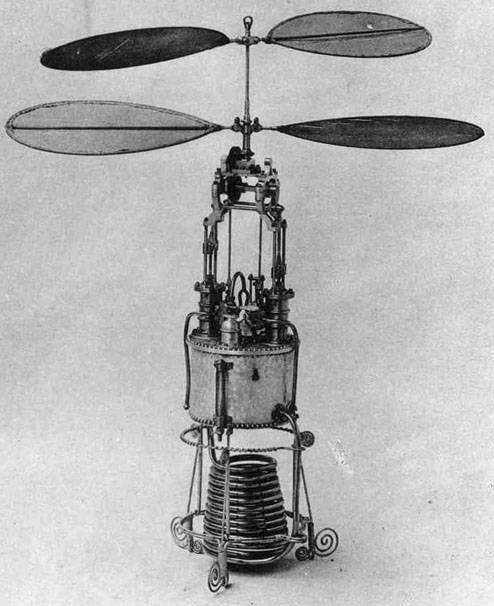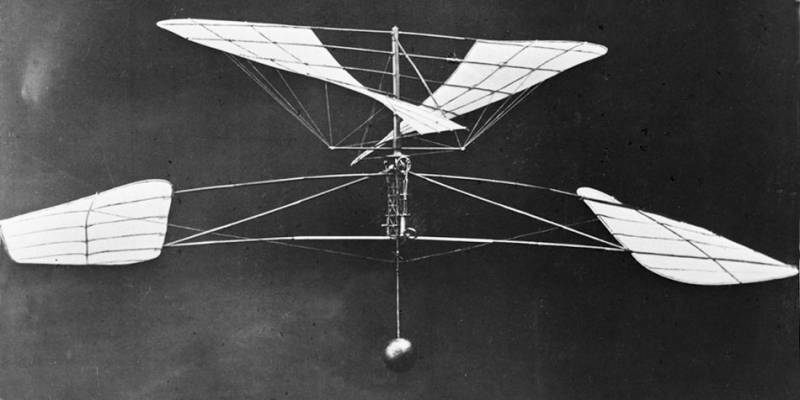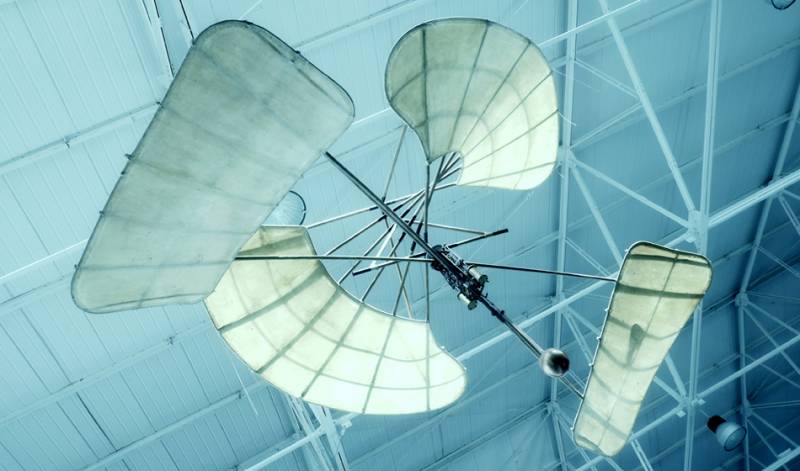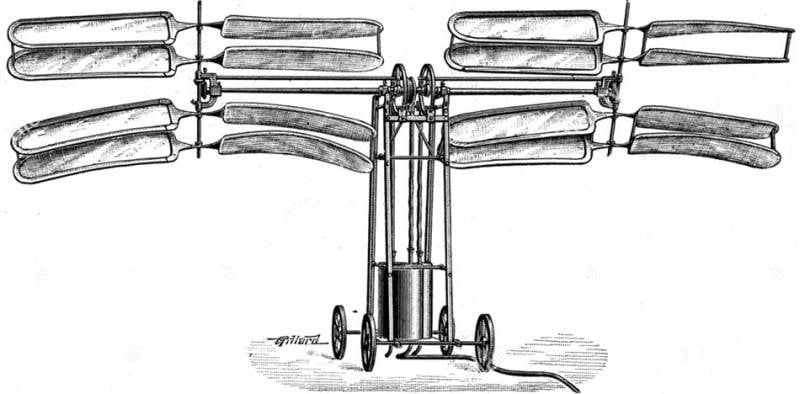Steam Drones
Exactly 140 years ago, on April 15, 1877, Italian professor Enrico Forlanini conducted in Milan tests of the world's first unmanned helicopter with a mechanical engine, capable of gaining altitude and stably, albeit briefly, stay in the air. Forlanini's helicopter had a coaxial design and a two-cylinder steam engine. Back in 1863, a similar model of a coaxial steam helicopter was built and tested by the Frenchman Gustave Ponton d'Amercourt, however, due to its high weight and low power density, it could not fly.
Forlanini found a palliative solution to this problem by maximizing the ease of powerplant. His steam engine had no fuel, no fire, and the boiler was a small and very durable steel ball with water that withstand internal pressure to 10 atmospheres. When it was heated by the external burner, the water boiled and evaporated, and the opening of the valve on the tube connecting the boiler to the cylinders put the machine into action. Thanks to this solution, the Forlanini machine with a two-meter span of screws weighed just 3,5 kilograms, however, due to the rapid drop in steam pressure, the motor could work for only a few seconds, continuously losing power.
In the most successful flight, the helicopter gained altitude 13 meters and landed 20 seconds after takeoff. Understanding that such a device could not be of practical value, and more efficient motors could not be seen on the horizon, the professor soon ceased to engage in rotary-wing machines, staked out for himself the world championship in the creation of a successfully flying helicopter. Later he became famous for the creation of high-speed boats and hydrofoil airboats, but this is another story.
On the screen saver - a photograph of the Forlanini helicopter.

Steam helicopter Ponton d'Amercourt. One glance at this structure is enough to understand that it could fly only in the fantasies of its creator and steampunk lovers.
Modern museum replica of the Forlanini helicopter. The “sharokotel”, which hangs on a thin tube, at the same time served as a load balancer, which allowed the device to remain stable, but only in calm weather.
And as a supplement - another flying machine of the steampunk era, although not with a steam one, but with an air motor. In 1878, Frenchman Pierre Castell built a helicopter with eight coaxial screws combined into two groups. He was driven by a two-cylinder engine that operated on compressed air from a ground-based compressor, with which the helicopter was connected with a long hose. The device weighed 22 kilogram, that is - it was much heavier and larger than the Forlanini model.
On tests, the helicopter took off from the ground and rose to a height of about two meters, but in flight it almost immediately took off. The inventor did not have time to turn off the compressor, the car crashed into a stone fence and collapsed. The further fate of this device and its creator is unknown.



Information